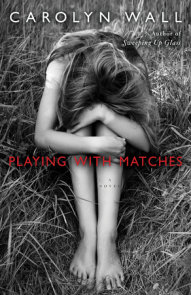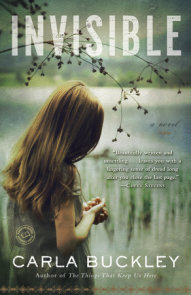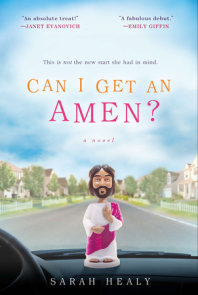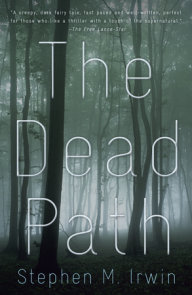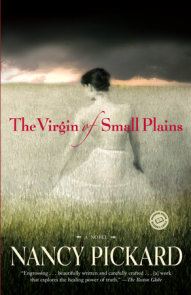READERS GUIDE
Questions and Topics for Discussion
1. How has Arden’s past shaped her into the person she is at the beginning of the novel?
2. The novel is set in Keokuk, Iowa, a town on the Mississippi River. At one time it was a prosperous town, but now many of its beautiful homes are neglected and deteriorating. How does the setting contribute to the overall story?
3. Arden’s mother warned her that it was a mistake to go back to Arrowood, saying it was best left in the past, and that if Arden was smart she’d “pray for an electrical fire and a swift insurance payout.” But Arden insists that she “had loved this house beyond reason, had felt its absence like the ache of a poorly set bone.” Discuss the role that the house plays in the novel.
4. To cope with the tragedy of the past, Arden’s mother rewrites history, pushing down her emotional pain and refusing to acknowledge the family’s loss. Toward the end of the novel, Arden says, “I couldn’t cauterize my wounds as my mother had done.” Can you relate to this coping mechanism? Compare and contrast Arden’s way of dealing with painful memories to her mother’s.
5. There’s a saying that you can’t go home again. What do you think it means? How does it apply to Arden’s situation? What do you think of her decision to stay in Keokuk and let go of Arrowood?
6. When asked why solving the mystery of the twins’ death was important to him, Josh says, “It’s like a riddle. . . . I hate not knowing the answer.” In what ways has Josh’s past shaped who he is as an adult? Do you think Josh’s and Arden’s analagous childhood experiences affected them in similar or different ways? How does Josh’s work with his website, Midwest Mysteries, compare to Arden’s thesis project?
7. In your opinion, who was responsible for the death of the twins?
8. Describe the relationship between Arden and Ben. Did the way it evolves in the novel surprise you? What did you expect to happen between them? Did your feelings about Ben’s mother, Mrs. Ferris, change over the course of the novel?
9. In what fundamental ways has Arden changed by the end of the novel? Do you think she will finally be able to move forward?
10. What did you think of the book’s surprise ending—-or was it a surprise? Discuss the role of memory in the novel. How are memory, truth, and nostalgia (“the bittersweet longing for a time and place left behind”) intertwined, and what impact do they have on the present–day lives of the characters? If Arden were to rework her thesis for graduate school, what would she write?
About this Author
A Conversation BetweenLaura McHugh and Leslie Lindsay
Leslie Lindsay is a mother, wife, and writer living in Chicagoland. She is the award–winning author of Speaking of Apraxia and reviews books widely, welcoming bestselling and debut authors to her literary blog, leslielindsay.com.
Set primarily in southern Iowa, Arrowood is Laura McHugh’s sophomore novel, but it’s certainly no slump. McHugh is an astute and observant writer who weaves touches of Colorado, Minnesota, Illinois, and Missouri in the languid landscape (which I absolutely adored, having lived in most of these states) in this psychological exploration of family and the stories our homes contain.
Leslie Lindsay: Laura, I am enamored with this gorgeous cover. I know, I know . . . we shouldn’t judge a book by its cover. Did you have any say in the visual appearance?
Laura McHugh: I love the cover, too. I’m not involved in the design process, though they do ask my opinion once the cover has been designed. Arrowood actually had a very different cover at first, and it was beautiful, too, but I didn’t love it. There was a young woman with long, pretty hair, and she was gazing at some sort of boathouse on a lake. It was lovely and serene, and nothing about it resembled the mood or the protagonist or the house in the book. They were great about tweaking it—-most important, switching the house out for one that more closely resembled Arrowood’s Second Empire style—-but it still didn’t feel right. I wanted to get rid of the young woman, make the whole thing darker, moodier. Later on, after the first set of advance reader copies had been sent out with that first cover, they gave it a complete overhaul. I was thrilled. This version really feels like my book. I don’t even have a copy with the original cover anymore—-my only one was auctioned off at a library benefit.
LL: I know you grew up in Missouri and the surrounding states, so I’m curious about “the little white house on South Fourteenth Street” you mention in your dedication. Most of all, I’m interested in the first spark that became Arrowood. Can you speak to that, please?
LM: Sure. The little white house is my grandparents’ house in Keokuk, which is nothing like the grand homes in the book. My family moved around a lot, and my grandparents’ house was the one place that always felt like home. It was a tiny one–bedroom, yet whenever the ten of us (I’m one of eight kids) came to visit, the house seemed to magically expand to make room for everyone. Years after my grandparents died, I went back to the house to find the door wide open, and I went inside. It was trashed—-squatters had been living there. I was scared. The entire neighborhood, which had once felt so safe, was menacing. I couldn’t reconcile my memories of this place with what it had become. In one sense, Arrowood is about that longing to return home, which in many ways is impossible. I also wanted to write about the decline and decay of a small town, and I combined all of that with a character who has been stuck in the past, haunted by a terrible crime. I wanted to see if she could solve the mystery and find a way forward despite everything crumbling around her.
LL: We absolutely have to talk homes! I am crazy about old houses, new houses, abandoned ones, and just about everything in between. In fact, I so related to young Arden with the guidebook to area homes tucked under her arm (that was me when I lived in Northfield, Minnesota!). What is it about homes that we—-and, perhaps, especially writers—-find so compelling? And do you have a favorite architectural style or time period?
LM: I love the idea of a house having a history—-that it’s full of stories you might never know. The first house I lived in had been abandoned for years before my parents bought it and was said to be haunted. It was Carpenter Gothic, with cathedral windows and curved scrollwork and an ornate staircase that my mother had spent more than a year painstakingly refinishing before the house caught fire. The place was eventually rebuilt, minus the characteristic features that had made it so stunning. When we drive by it now, my mother bemoans the missing balcony, the shortened windows, the lack of trim.
I favor the various styles of the 1800s, including Second Empire, Gothic Revival, Italianate, and Victorian, and I love to see different styles on the same block, the way you do in old towns like Keokuk. So many subdivisions now are homogenous—-rows of nearly identical houses. We incorporated architectural salvage when we built our house, including an arched church window and doors from old houses that had been torn down—-small pieces of history in a house with no past.
LL: While Arden is in a sense “haunted” by the disappearance of her twin sisters, Arrowood is not exactly a ghost story, though there are definitely creepy things at play, a slight menacing effect. Was this your intention all along, or did it sort of grow organically as the manuscript progressed?
LM: Both, I think. I knew that Arden would be “haunted,” but I like the space in between, where you wonder: Is there something going on here, or is this in her head? The details came together as the story -progressed.
LL: In that vein, do you write to plot points, or do you let your characters tell the story?
LM: I’ve tried it both ways. The Weight of Blood was written without any up–front planning (though I certainly did a lot of organizational work in revisions). I tried to do more of an outline for Arrowood, but I found that it took a lot of the pleasure out of writing when I was working toward predetermined points. I do best when I let the story grow from the characters’ desires and motivations and then clean things up as needed afterward.
LL: There’s this wonderful melding of memory with truth in Arrowood, something that is often present in fiction, but in real life, too. We simply don’t always remember events as we once imagined. Can you talk about how your themes, memory and truth, often become muddled?
LM: I’ve read a lot of interesting material about the unreliability of memory in eyewitness accounts, and I was especially interested in the way such accounts could influence an investigation—-possibly moving it in the wrong direction. I suspect part of my interest in memory stems from my own past—-I’m the youngest of eight children, and while we have many shared childhood memories, there are plenty of things I can’t possibly remember as clearly as they do. I have memories of certain details and events from houses and towns where we lived when I was very small, but I can’t be sure how much of that is actual memory and how much was woven together from my siblings’ retelling of these things. Is it ever possible to separate true memory from created memory? Is it possible to go back to a case that’s been cold for nearly twenty years and find the truth? These were things that I wanted to explore in Arrowood.
LL: For slightly selfish reasons, I’m a little curious about the second–book process for a published author. I imagine there would be a good deal of anxiety involved. What’s the overall process like?
LM: There was definitely more anxiety with the second book than the first. With the first, no one was waiting for it. I could meander and make all sorts of missteps and then fix them in subsequent drafts, and no one would ever know. With the second book, there are expectations, and other voices in your head. Plus, the first book hasn’t gone away. You want to be fully focused on the new book, but you’re still spending time promoting the old one. It’s hard to ignore all of that and just let yourself write the story you want to write. I learned a lot about what works for me and what doesn’t while I was writing this second book, and hopefully that will help me going forward.
LL: Can you give us a sense of what you’re working on next?
LM: The next novel is set mainly in rural Missouri and Kansas. The protagonist is still reeling from her brother’s unexpected death when she’s sent to investigate a deadly accident that has torn apart a rural community. She soon realizes that nothing is as it seems.
LL: What’s inspiring you nowadays? What gets your creativity flowing?
LM: Being still and observant. That sounds terribly dull, but that’s how it works for me. I’m a people watcher, and I’m always making up backstories for strangers I see at the library, or I’ll walk by an interesting house and start piecing together what kind of family might live inside. And, of course, I always read the crime section of the news.
LL: What should I have asked, but may have forgotten?
LM: Nothing! You always have great questions. Thank you, Leslie!
Originally published on leslielindsay.com. Reprinted here by -permission.









